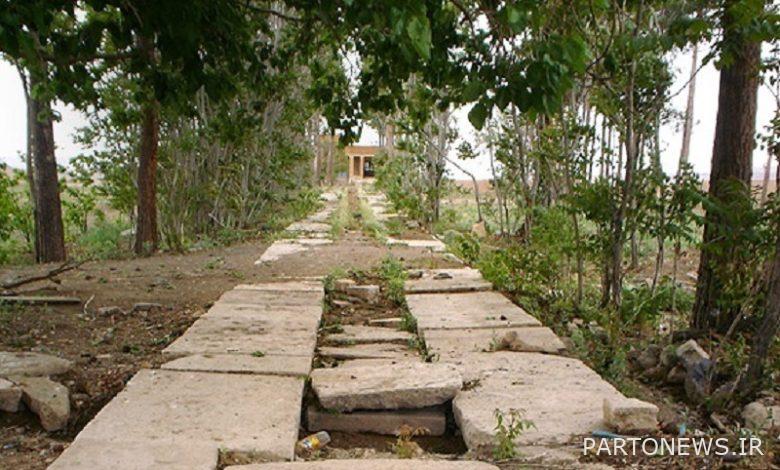Tajabad Natanz Nagini garden in the heart of the desert / Tajabad from the past to the present

According to the social reporter of Moj news agency, the Safavi period is a new season in the emergence and creation of Iranian gardens, which are located in the corner of the period. Safavid and also emerged in the cultural field of Iran. The pattern of the created gardens depended on the climate and location of the garden; But in general, the gardens of this period have many similarities with each other and follow a specific pattern. Some of these gardens, such as the Tajabad garden of Nazanz, were created in urban centers.
Taj Abad Garden of Natanz is certainly one of the lasting works of this era, which is located around Natanz and on the way to Kashan, Isfahan. The garden has four terraces, and the upper terrace has a natural slope, which is necessary for flat gardens, so that water moves from the top of the garden to the bottom. The fence of the garden is still there, although it has collapsed in some parts.
Architecture of Tajabad Palace, Natanz
Taj Abad Natanz garden is a collection of several buildings including the main palace, bathroom, pantry, place for drinking water and entrance vestibule. Due to its location in a suitable geographical point and pleasant climate, it has been the place for cultivation and planting of the best types of aromatic plants native to Iran, including the Mohammedan flower and the flower known as Shah Abbasi jasmine. One of the most important features of the architecture and the interior of this building is the presence of Safavid era flower and bush paintings on its ceiling and walls, which are very similar to the paintings of Isfahan’s Alaiqapo Palace and similar to the Prince’s Garden in Kerman. Also, there was a waterway from the vestibule of the door of the garden to the inside of the palace, which is reminiscent of the waterway of Fin Kashan Garden. This collection was registered in the list of national works of Iran with number 898 in 1349.

Tajabad, a jewel on the way to Isfahan
Tajabad is a village that, due to its good weather and convenient location for hunting, an Iranian garden has been created for a few-day stay. The beautiful and small village of Tajabad looks like a jewel on the road to Isfahan. Tajabad Kushk includes mansion, Gulab Giri building and bath which is located in a unique garden. The lush gardens of this complex are surrounded by sturdy cypress, pine and plantain trees. The two gulab-giri buildings in the complex represent the presence of flower-covered gardens and the joyous Golestan in the vastness of this desert. This building is as described in some historical books and sources such as Sepahan’s travel book of the Safavid era. It was the place of residence of Shah Abbas I Safavid and other kings of this dynasty during their travels from Qazvin and Tabriz to Kashan and Isfahan and vice versa. One of the most beautiful effects of the Abbasid gardens here is the wide and long water pond similar to the one in Fin Kashan garden. Today, only one waterfall remains in its place and the effect of two other stones that were built behind the Ahed Qajar house can be seen.
Tajabad garden is of interest to tourists
Tajabad garden can become one of the tourist spots of the region. Over the years, this garden has kept its past beauty and glory and it dazzles the eyes of every viewer, a garden where due to its geographical location and height above sea level and a very pleasant climate, even the best-looking rose water has been produced Due to the great interest of the Safavids in creating lush gardens with lots of different trees and gardens covered with flowers, as described in detail by most of the tourists visiting Iran, especially Isfahan, in their travelogues.
Although today parts of this work and the building of Gulabgiri Bagh have been destroyed, but the original building is still standing and the new owners want to turn Tajabad into the production area of this product by planting 10 hectares of roses.

